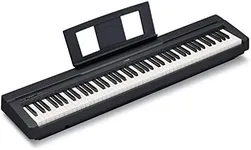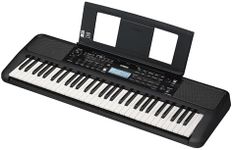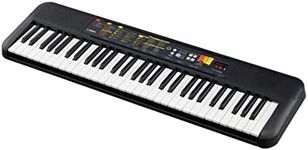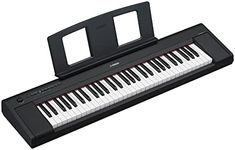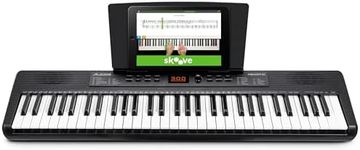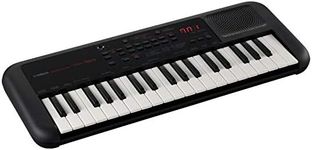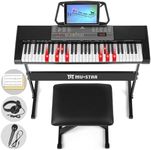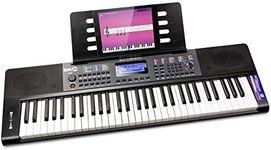Buying Guide for the Best Beginner Keyboards
Choosing the right keyboard as a beginner can be a bit overwhelming due to the variety of options available. However, understanding the key specifications and how they align with your needs can make the process much easier. Here are some important factors to consider when selecting a beginner keyboard.Number of KeysThe number of keys on a keyboard can range from 25 to 88. For beginners, a keyboard with 61 keys is often recommended as it provides a good balance between range and portability. If you are serious about learning piano and want to eventually play more complex pieces, an 88-key keyboard, which is the standard for acoustic pianos, might be a better choice. However, if you are limited on space or need something more portable, a 49-key keyboard can also be a good starting point.
Touch SensitivityTouch sensitivity refers to how the keyboard responds to the force with which you press the keys. This is important because it allows for expressive playing, similar to an acoustic piano. Keyboards with touch sensitivity will produce louder sounds when you press the keys harder and softer sounds when you press them gently. For beginners, having a keyboard with touch sensitivity is highly recommended as it helps develop proper finger strength and dynamics.
Action TypeThe action type of a keyboard refers to the mechanism that produces the feel of the keys. There are three main types: weighted, semi-weighted, and unweighted (or synth-action). Weighted keys mimic the feel of an acoustic piano and are ideal for those who want a more authentic playing experience. Semi-weighted keys offer a balance between the two, providing some resistance without being too heavy. Unweighted keys are lighter and easier to press, which can be good for beginners, especially younger players. Consider your long-term goals and comfort when choosing the action type.
PolyphonyPolyphony is the number of notes a keyboard can produce at the same time. Higher polyphony allows for more complex and sustained sounds. For beginners, a keyboard with at least 32-note polyphony is usually sufficient. However, if you plan to play more intricate pieces or use the sustain pedal frequently, you might want to consider a keyboard with 64-note polyphony or higher.
Built-in Learning ToolsMany beginner keyboards come with built-in learning tools such as lesson modes, light-up keys, and metronomes. These features can be incredibly helpful for new players as they provide guidance and help develop a sense of timing and rhythm. If you are just starting out, look for a keyboard that includes these educational features to enhance your learning experience.
Connectivity OptionsConnectivity options such as USB, MIDI, and headphone jacks can greatly enhance your practice and performance experience. USB and MIDI connections allow you to connect your keyboard to a computer or other devices for recording and using music software. Headphone jacks are essential for practicing quietly without disturbing others. Consider what additional equipment you might use and choose a keyboard with the appropriate connectivity options.
PortabilityPortability is an important factor if you plan to move your keyboard frequently or have limited space. Lighter and more compact keyboards are easier to transport and store. However, keep in mind that more portable keyboards might have fewer keys and features. Balance your need for portability with the other specifications that are important to you.
